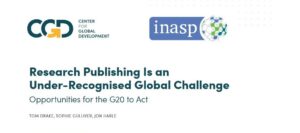Research links high prevalence of anaemia among Nepalese girls to malnutrition
Anaemia is a global health problem, particularly in developing countries. According to the World Health Organization, about 40% of the world’s population suffers from anaemia and adolescence is one of the most vulnerable age groups.
Over half the population of Nepalese adolescent girls have anaemia, mostly due to undernourishment, a recently conducted research in Nepal has revealed. The research conducted over a period of one year by a team of doctors at the Department of Paediatrics and Adolescent Medicine, B.P. Koirala Institute of Health Sciences, Dharan, in eastern Nepal found anaemia in 222 of the 433 girls participating in the research.
The research, “A study of anaemia among adolescent girls in eastern part of Nepal”, which was published in the recent issue of Journal of College of Medical Science-Nepal, has attributed the high prevalence of anaemia among the adolescent girls to undernourishment. “The prevalence of anaemia was quite high; 51% of the study population. It was significantly associated with undernourishment, lack of parental education and pre-pubescent girls,” said Dr ND Subedi, Managing Editor of the journal.
“Anaemia is a common problem in developing countries including Nepal and it’s more prevalent among females. The authors chose a government school in Dharan to determine the prevalence of anaemia among the adolescent school girls. It is a grassroots-level study and the authors have presented the gravity of this condition in a clear way,” added Dr Subedi. “The study findings can be implied to prevent anaemia in the school girls as the causative agents are identified.”
Among the 28.2% girls who were undernourished, 75.2% had anaemia. Also, vegetarians were more likely to have anaemia than non-vegetarians. Anaemia was found among 69.6% of the vegetarian girls. However, the research article doesn’t attribute anaemia prevalence with this type of diet as only 5.3%, a statistically insignificant population, was vegetarian.
“Iron-deficient anaemia is the most common type of anaemia throughout Nepal, not just the eastern part of the country,” said Dr. Suman Nepal, paediatrician at Kanti Children’s Hospital, the oldest government children’s hospital in Nepal. “The main causes of anaemia in Nepal in general are malnutrition, worm infestation and infection.”
Girls suffered from anaemia due to a low level of haemoglobin in their blood as they did not consume enough iron-rich food in their diet. Although worm infestation is a major cause of anaemia globally, the research failed to establish any linkage between worm infestation and anaemia for the Nepalese girls. The study found prevalence of anaemia among girls infested by worms and not infested worms to be almost equal.
The study recommends that the government introduces programmes aimed at improving people’s access to nutritional foods. The research is expected to help policymakers design robust programmes targeted at reducing anaemia that will ultimately reduce maternal morbidity, mortality and low birth weight. The researchers also recommended that the same study be conducted with a larger sample size to get a clearer picture of the prevalence of anaemia among Nepalese girls.
The research article written by Dr Piush Kanodia, Dr Mukesh Bhatta, Dr Rupa Rajbhandari Singh, Dr Nisha K Bhatta and Dr Gaurishankar Shah was published on page 19-22 of the latest issue of the Journal of College of Medical Sciences-Nepal.
About the journal
The Journal of College of Medical Sciences-Nepal (JCMS-Nepal) is a multidisciplinary, quarterly, peer-reviewed biomedical journal published by College of Medical Sciences, Bharatpur, Nepal. Started in 2004 as an annual journal, it is one of the oldest medical journals in the country. The journal publishes evidence-based, scientific research articles from various disciplines of the medical sciences from Nepal and other developing countries to publish their research findings. The journal, published in NepJOL (Nepal Journals Online), is also available on its website www.cmsnepal.edu.np/jcms.html.
About NepJOL
Nepal Journals Online (NepJOL) hosts over 100 journals published from Nepal, covering the full range of academic disciplines. The objective of NepJOL is to give greater visibility to participating journals and to the research they convey. NepJOL was initiated in June 2006 and officially launched in September 2007. It is a project supported by INASP and locally managed by Tribhuvan University Central Library. It aims to promote the awareness and use of Nepal-published journals in all disciplines by providing access to tables of contents (TOCs), abstracts and full text on the Internet.
About INASP
INASP is an international development charity working with a global network of partners to improve production, sharing and use of research information and knowledge, so that countries are equipped to solve their development challenges. In particular, INASP works to strengthen the availability, access and use of international research information by researchers in developing countries and the production, quality, dissemination and access of research outputs from researchers in those same countries.
Disclaimer: Research published in journals hosted on the NepJOL platform is selected by the journals in accordance with their own editorial processes and criteria. INASP and Tribhuvan University Central Library provide hosting and guidance on good practices but are not involved in selection of research.
For Further Information
Thakur Amgai, Communications Consultant, INASP
email tamgai@inasp.info
Dr Sangita Shrestha, Communications Officer, INASP
email sshrestha@inasp.info




